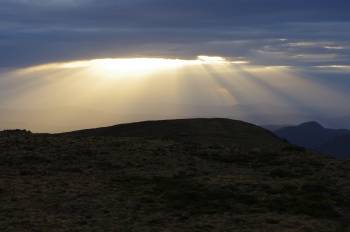People who have walked in Tasmania are probably familiar with the threat posed by Phytophthora, a fungus that attacks the roots of susceptible plants, in many cases killing the plants. In some native plant communities, epidemic disease can develop causing the death of large numbers of plants.
The fungus is now well established in many areas of moorland, heathland and dry eucalypt forest in Tasmania.
Phytophthora root rot may spread with the movement of infected soil or plant material by people or animals and may be transported by water perculating through the soil or in creeks. People can transport the fungus to new areas on dirt adhering to vehicles, items they are carrying or footwear.
Often entry points to remote areas will have a ‘boot washing’ station, with hikers asked to clean their footwear to avoid the possibility of spreading Phytophthora into new areas.
Now Myrtle Rust is shaping up to be a significant threat to a large number of plant species. According to the Invasive Species Council, “the pathogen, myrtle rust, had slipped through national biosecurity borders and has since spread to far north Queensland and Victoria. Climatic modelling suggests it will spread much further.
There are more than 2000 plants in family Myrtaceae, Australia’s dominant plant family, including eucalypts, bottlebrushes and tea trees – most are susceptible to the disease”.
The fungus does best in moist forests and woodlands and has spread widely since its first detection at Wyong, near Gosford in NSW, in 2010.
According to a report in The Age, ‘the rust penetrates and infects leaves of susceptible plants. Treatment of diseased plants includes coating them with sticky sprays before their removal to avoid the inadvertent spread of spores into the air.
Standard washing-machine use with detergent will kill the spores on clothing.
Similarly, bush travellers can concoct a mix of 75 per cent methylated spirits and 25 per cent water to spray on tents and other equipment to kill the spores’.
There are no reports that I am aware of Rust being found in the Australian Alps. But bushwalkers and other travellers heading to Victoria and Tasmania over the summer are advised to take care to avoid spreading a fungus that has already placed dozens of native plant species at “immediate risk”.
Please be aware of following any instructions for sanitation that may be signposted on walking tracks.
[the image comes from Wild magazine]
























































Leave a comment